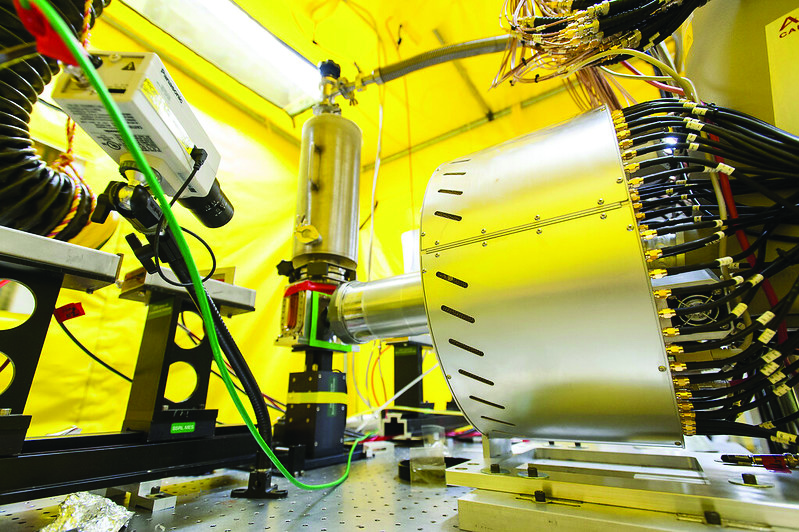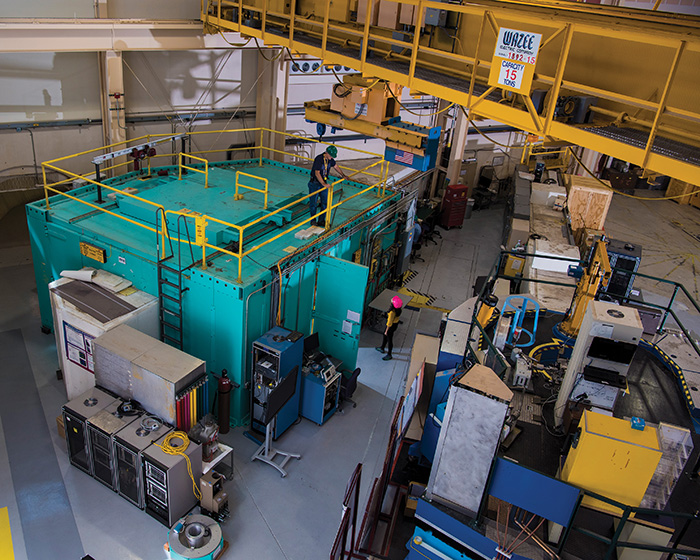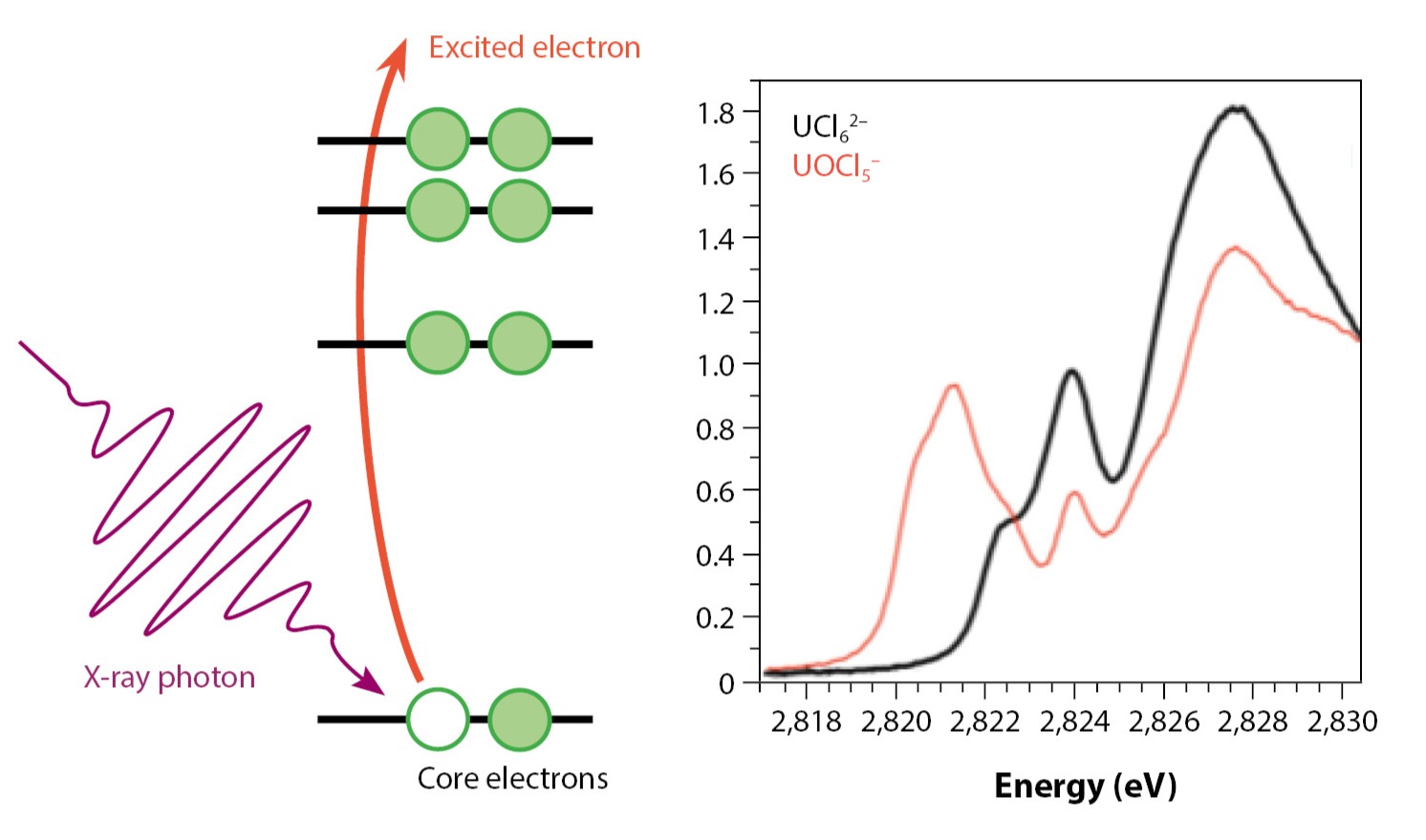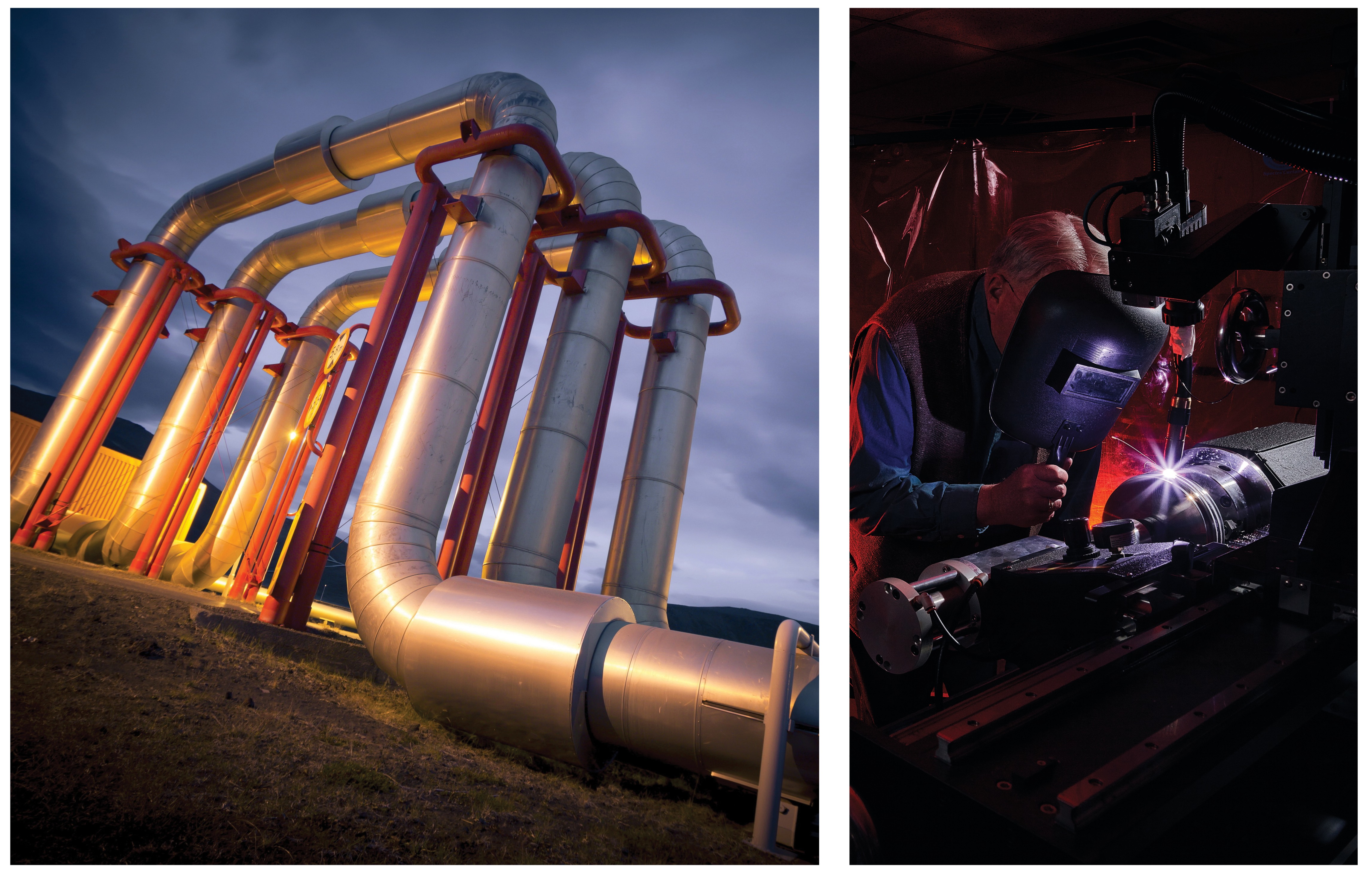Magnetostriction Studies of Alpha Plutonium
- Mark Wartenbe
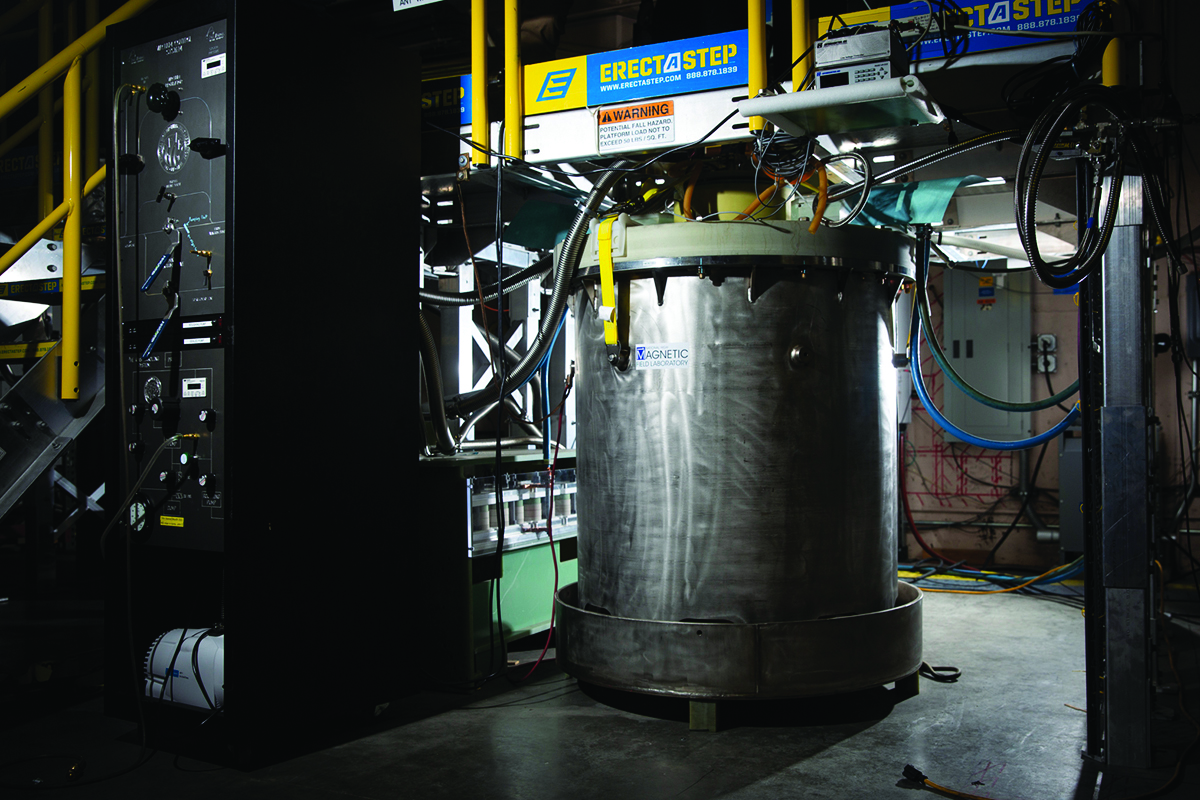
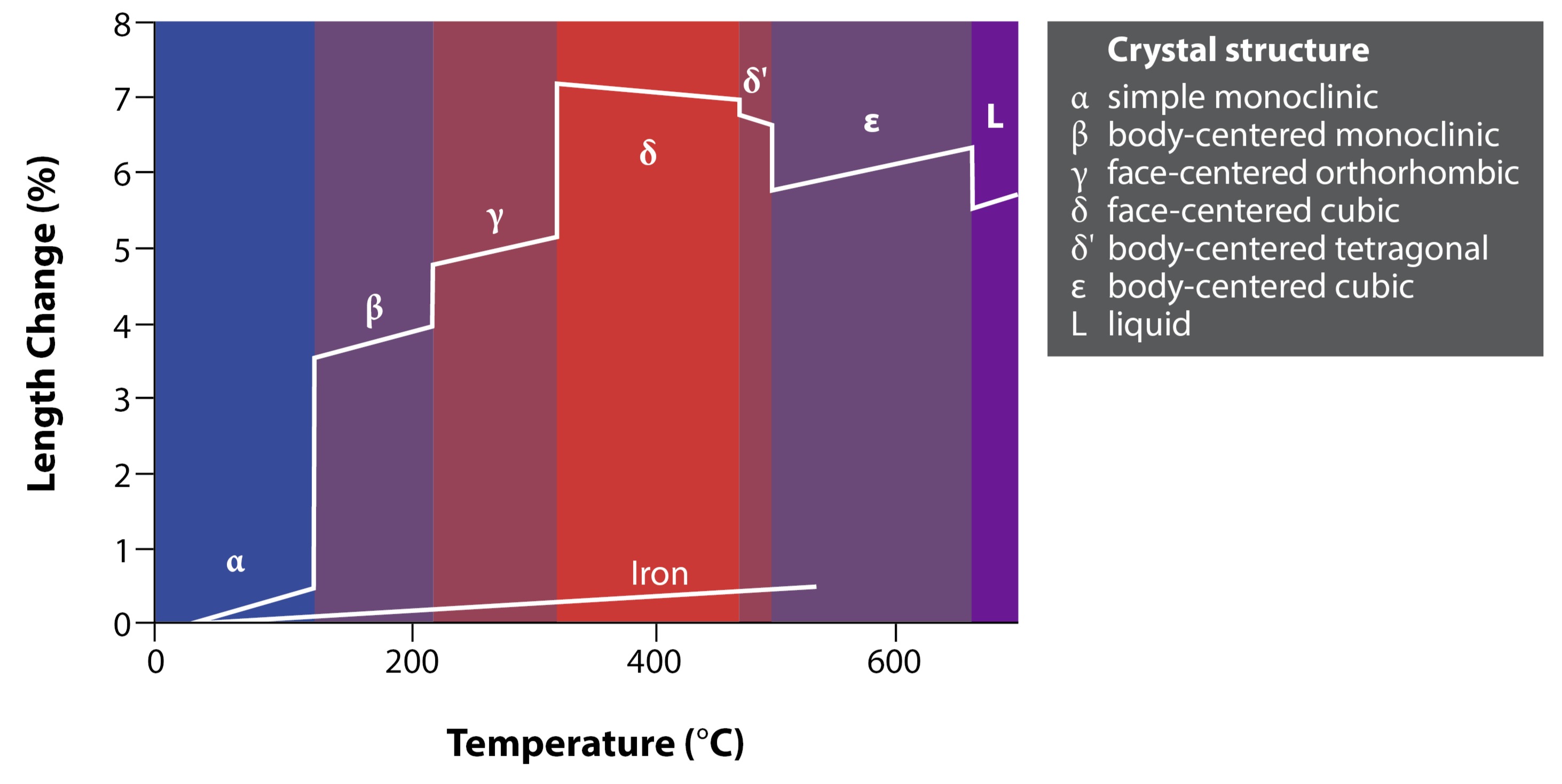
In this study, we used the parameters of low temperature and high magnetic fields to explore magnetostriction in alpha plutonium, that is, how the physical size of the material changes with an applied magnetic field. This effect is most recognizable as the source of “humming” from the magnetic field-induced dilatometric response of an electrical transformer’s ferromagnetic core—the alternating current, positive to negative, causes corresponding changes in alternating magnetic strain on the iron. To achieve these small-scale dimensional measurements in a non-ferromagnetic material, we used capacitive dilatometry, which offers high-resolution measurements and small instrument size that proved vital in these experiments. The results show an intriguing crossover between low temperature electron coherence and higher temperature behavior.
Kondo effect
Central to the discussion of plutonium physics is the concept of the Kondo effect. Jun Kondō proposed a model in 1964 describing the upturn in resistivity seen in nonmagnetic metals with dilute magnetic impurities at very low temperatures. This concept has been extended in the Kondo lattice model, in which the localized magnetic moments of the lattice (“magnetic impurities”) are “quenched” by spin antiparallel coupling with electrons from the conduction band. Kondo lattice behavior often manifests as an electrical resistance that rises with lowering temperature, reaching a peak then sharply dropping as scattering from localized moments is reduced by the coupling of the fixed lattice moments and conduction electrons spins. This effect is seen in numerous compounds and alloy systems. Although alpha-manganese and curium exhibit a similar electrical resistivity response from antiferromagnetic ordering, plutonium appears to be the only non-antiferromagnetic element that displays this behavior.
Low temps, high fields, and tiny dimensional changes
To probe the unusual electronic behavior of plutonium, we applied low temperatures (1.3–300 K) and high magnetic fields (up to 15 T) to an alpha plutonium sample and measured the resulting dimensional changes. Low temperature studies allowed investigation of energy scales and phenomena that are normally hidden by higher temperature effects. Note that in this temperature range, plutonium exclusively adopts the alpha phase, which is stable up to 385 K. Magnetic fields are commonly used in condensed matter physics to probe low temperature behavior—in our context, magnetic fields are unique because they couple to magnetic moments very effectively while only weakly affecting the underlying lattice. This allows direct examination of plutonium’s electronic structure while leaving the bulk of the sample unperturbed, unlike many other techniques. Very large magnetic fields are needed to observe even small volume changes with magnetostriction, and the resulting changes in the material therefore also require very precise measuring devices. Dimensional changes can be precisely measured as a function of temperature using dilatometers, and capacitive dilatometers, in particular, are uniquely suited for low temperature studies, with their small size allowing them to be fully inserted into many commercially made cryogenic systems (Fig. 2).
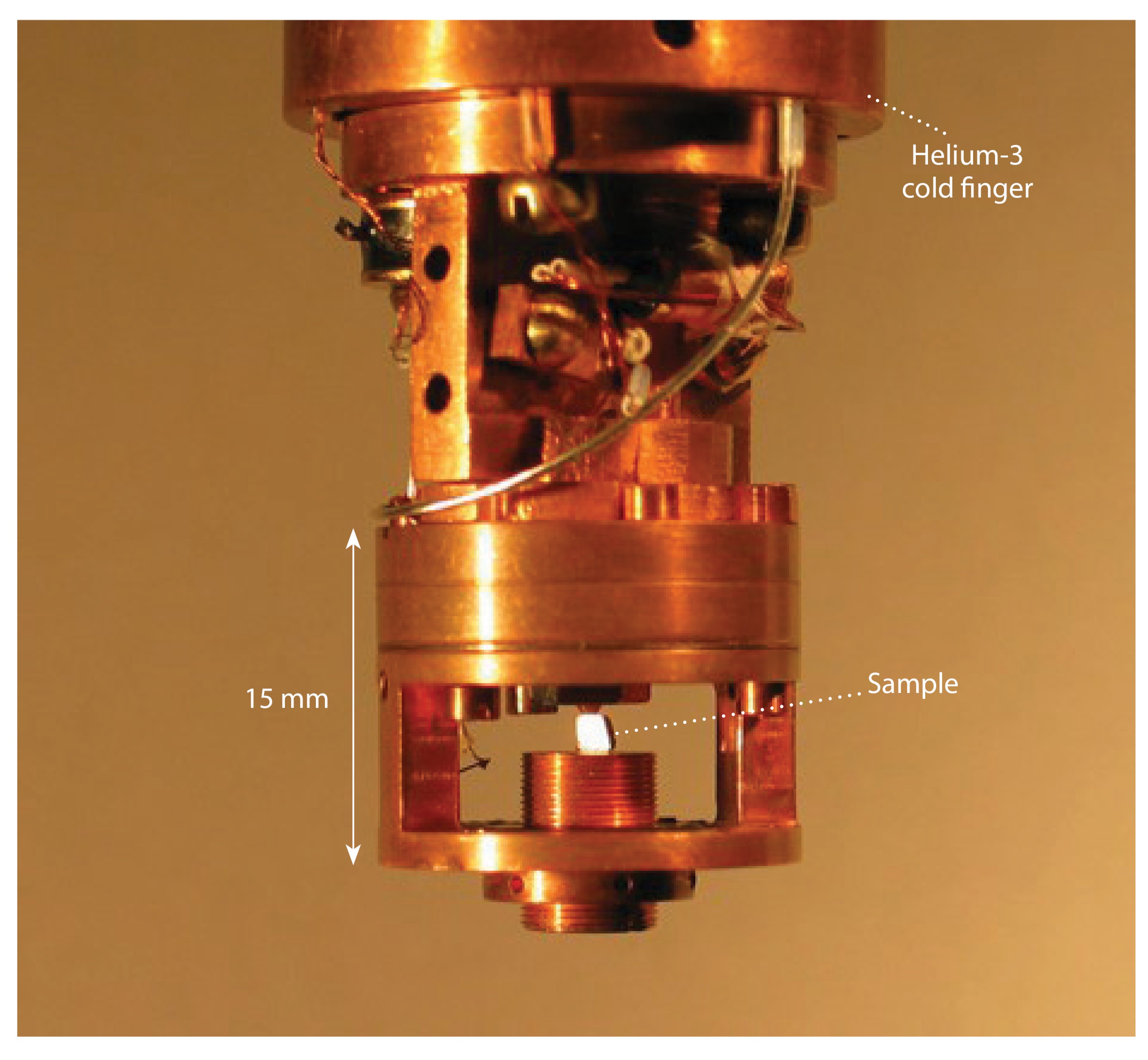
Improved dilatometry methods and a hidden order in delta plutonium
Previous dilatometry and magnetostriction work has focused on various delta plutonium materials using an optical fiber Bragg diffraction method. This method successfully found a crossover in gallium-stabilized delta plutonium from a positive magnetostriction response to a negative one (i.e., changing from expansion to contraction), revealing a previously hidden, yet substantial, contribution to the electronic structure of delta plutonium under an applied magnetic field. While fiber Bragg optical dilatometry offers many advantages, it has a relatively low sensitivity (10–8 m) and requires gluing a sample to the fiber in question. Thermal cycling is particularly stressful for these techniques, as the samples tend to become unglued with constant thermal contraction and expansion. Capacitive dilatometry, however, relies on a dilatometer containing two parallel capacitor plates and remains fixed over an unlimited number of thermal cycles. Samples are mounted in contact with one of the capacitor plates which is allowed to move freely against a spring, while the other plate remains fixed—thus, as the sample changes size, the plate distance also moves. These devices require a long process of assembly, thermal exercising, and background characterizations. However, the benefit is an unmatched resolution of 10–12 m, firmly in the sub-angstrom range. This is the first time that this technique has been applied to plutonium, and it offers an improvement in both sensitivity and versatility compared to the more widely employed push-rod dilatometry technique.
Samples of plutonium cut into 2 × 2 × 2 mm cubes were loaded into dilatometers that were then placed into custom-made brass containment cans. A sintered, stainless steel frit was fixed to each can as a HEPA filter , allowing gas exchange and ensuring thermalization while eliminating the possibility of system contamination. This setup was attached to a custom-made probe and lowered into a magnet variable temperature insert (VTI ) system capable of a temperature range of approximately 1.3–300 K. After stabilizing the temperature, the magnetic field was swept at a low rate to prevent inductive heating from 0 to 15 T.
Magnetostriction data: Comparing alpha and delta plutonium
We were able to easily resolve the signals, which consisted of a largely quadratic and relatively flat signal response due to their small magnitude; magnetostriction response versus temperature is plotted in Fig. 3 (note that the magnetostriction coefficient is the fractional change in volume). The value of dimensional change for alpha plutonium is very small, which is expected for such a non-magnetic material—a similarly sized signal was also seen in previous gallium-stabilized delta plutonium work, again attesting to the small magnetic response of plutonium. However, while the coefficient changes sign from positive to negative in the case of gallium-stabilized delta plutonium , there is no change for undoped alpha plutonium. Instead, we see an increasing magnetostriction coefficient (i.e., expanding sample size) with increasing temperature from around 100 K upward, in the 10–8 m range. Below 100 K, there is a discontinuous break in the coefficient trend, with the low temperature coefficients being much larger and more constant over the temperature range (0–70 K). This characteristic change corresponds roughly in temperature with the theorized onset of Kondo coherence, which can be seen in literature values of resistance.

Above the proposed Kondo coherence temperature (50–100 K), we analyzed the magnetostriction response in a similar manner to our previous approach using gallium-stabilized delta plutonium. Prior data gave strong evidence for a higher energy state that is both smaller in volume and higher in magnetic moment. Both characteristics point to a stabilization of the beta phase, which not only has a smaller volume than the delta-phase but also has the largest magnetic moment of all plutonium phases. Likewise, we see a similar phenomenon in the higher temperature data obtained for alpha-phase plutonium. Field-tuned states among the heavy elements are not unprecedented; for example, certain cerium alloys change from the low temperature alpha-phase to the room temperature gamma-phase with the application of a magnetic field.
Meanwhile, the low temperature data (< 75 K) show a relatively high quadratic coefficient value and a much flatter temperature dependence. To gain further insight, resistivity for alpha-phase plutonium (literature data) was plotted alongside the magnetostriction data (Fig. 3). The peak in resistance at 75–100 K marks the theorized onset of Kondo coherence in the material, when conduction electrons begin to screen the lattice moments, thus reducing electron-lattice scattering and resistance. The discontinuous jump in behavior occurs exactly in this transitional region. Limited points on the low-end data (< 100 K) make analysis difficult, but it is clear that two distinct regions of different behavior correspond to the potential onset of Kondo coherence in alpha plutonium.
Summary
The complexity of plutonium’s electronic structure creates unique structural and magnetic effects, including non-magnetic phases, unprecedented among the elements and still poorly understood. We used low temperatures (1.5–300 K) and high magnetic fields (up to 15 T) to explore the magnetostriction of plutonium, i.e., how the material physically expands or contracts under an applied magnetic field. Previous work explored the gallium-stabilized delta phase using an optical fiber Bragg diffraction method; in our work, we chose to examine undoped plutonium—alpha phase in the temperatures explored—using a more sensitive capacitive dilatometer. This is the first time that this technique has been applied to plutonium. Although our results were limited by access to material, our data is consistent with both a low temperature onset of Kondo coherence (a correlation effect that has been invoked to explain the non-magnetic states of plutonium) and a potential field-tuned phase change to the beta phase at higher temperatures, the latter increasing the challenge of interrogating the alpha phase electronic state. The data ultimately tell an interesting but as yet unresolved story of the interaction of electronic states, correlated behavior, and the influence of magnetic fields. We remain hopeful that such work will continue to shed even more light on this compelling mystery.

About the Author
Mark Wartenbe received his PhD in 2018 for his work on actinide-based superconductors at the National High Magnetic Field Laboratory Pulsed Field Facility at both Los Alamos National Laboratory and Florida State University. He continued his pulsed-field measurements at Los Alamos, focusing on actinides and plutonium in particular.
Acknowledgments
I'd like to thank my mentors Paul Tobash and Neil Harrison, in addition to the National High Magnetic Field Laboratory Pulsed Field Facility and MST-16 for their amazing assistance in this work, and the Seaborg Institute for making all this possible. Additional thanks to Franz Freibert and David Clark for their input in the writing of this article.
Further reading:
- J.C. Lashley, A. Lawson, R.J. McQueeney, G.H. Lander, “Absence of magnetic moments in plutonium,” Phys. Rev. B, 2005, 72, 054416.
- N. Harrison, J.B. Betts, M.R. Wartenbe, F.F. Balakirev, S. Richmond, M. Jaime, P.H. Tobash, “Phase stabilization by electronic entropy in plutonium,” Nat. Commun., 2019, 10, 3159.
- C. Tyler, “Magnetostriction,” 1663, August 2020.
- A.M. Boring, J.L. Smith, Los Alamos Science, 2000, 26, 90.

